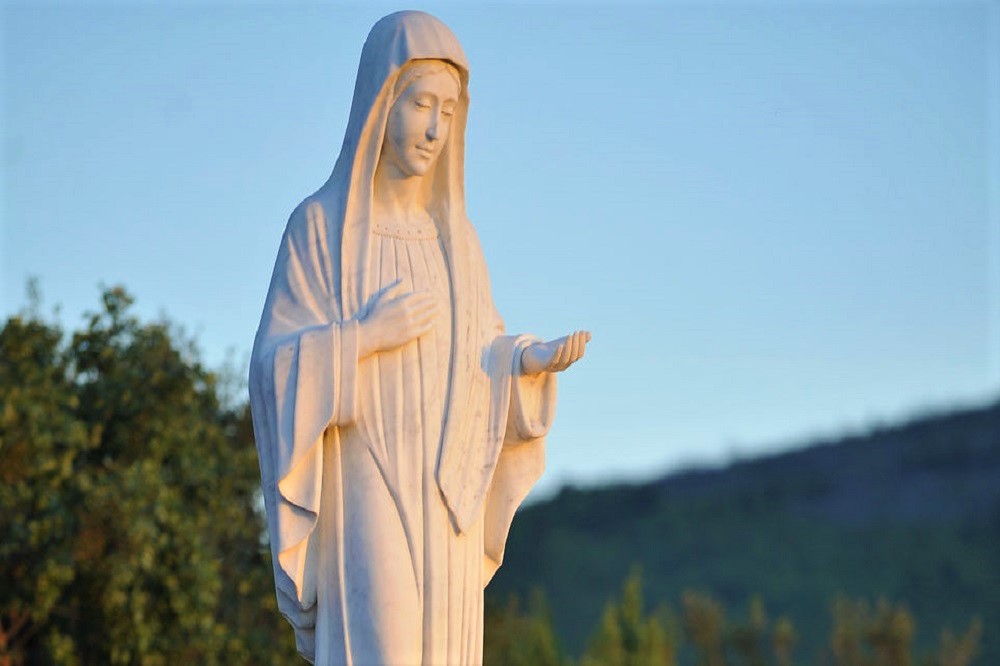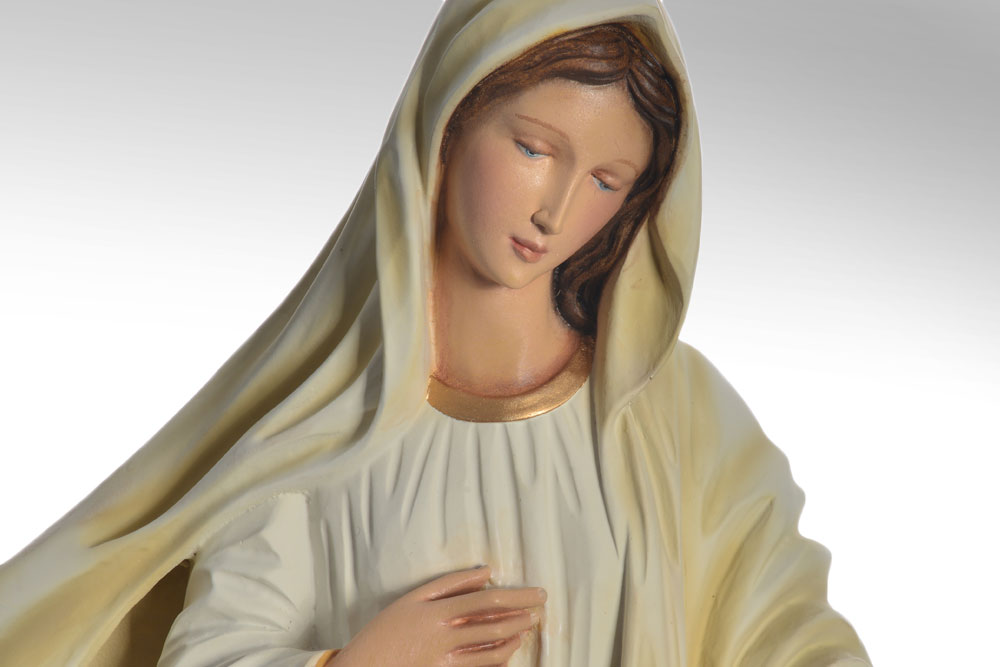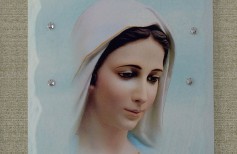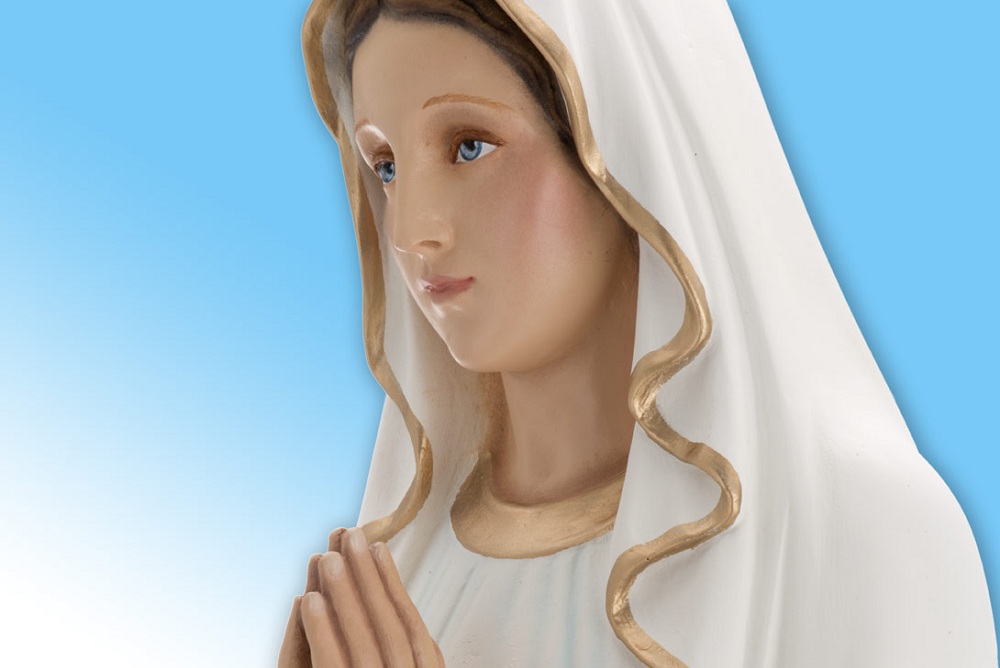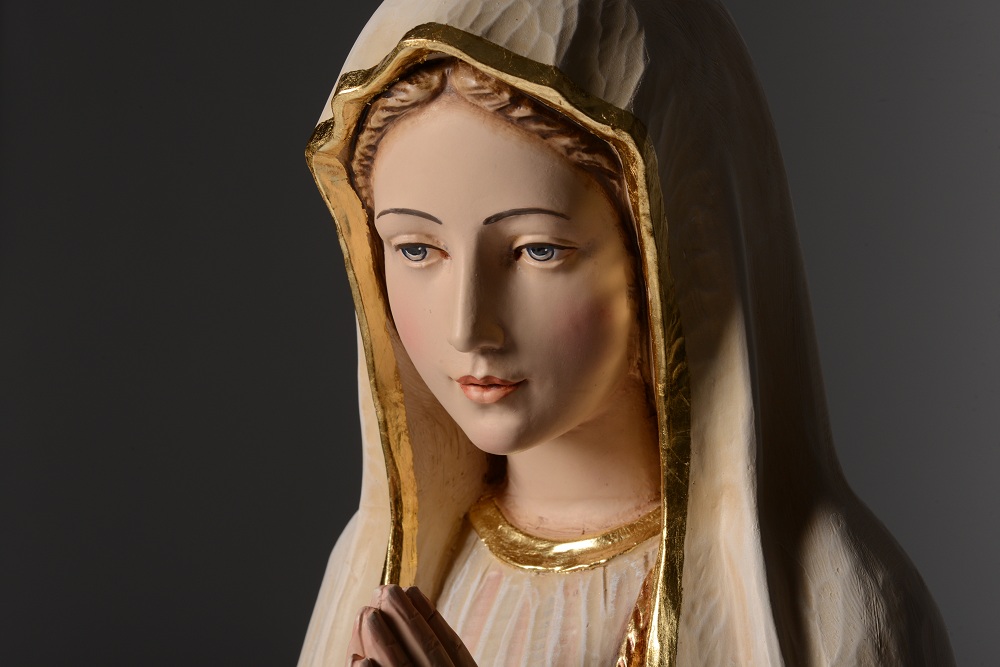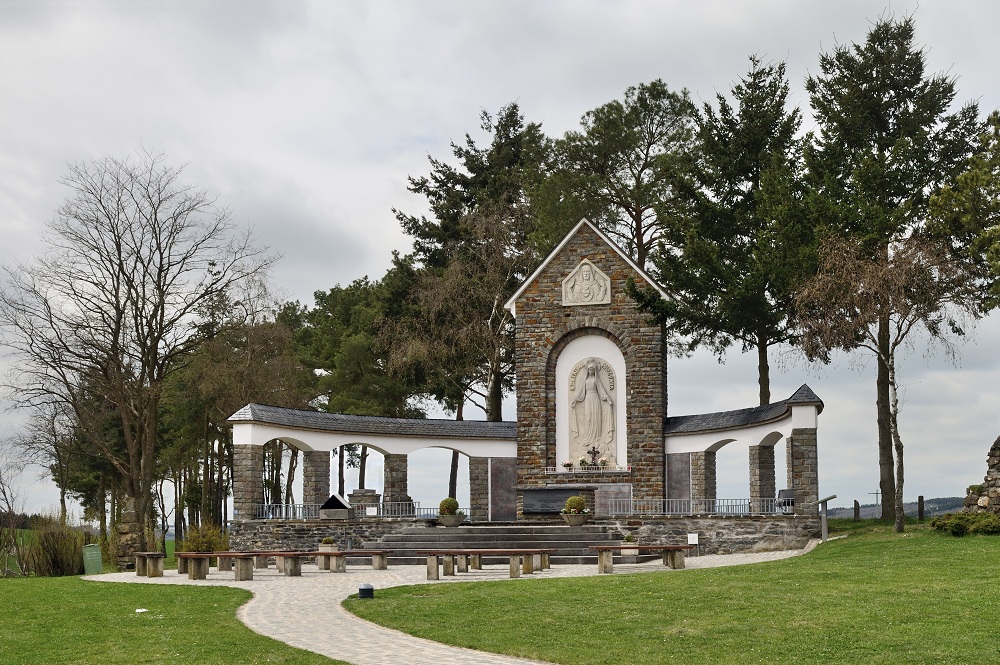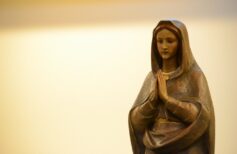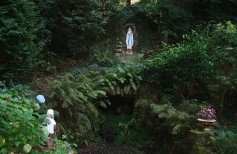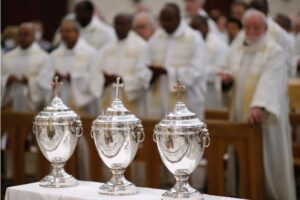Our Lady of Medjugorje has rendered an otherwise anonymous village in Bosnia and Herzegovina unique and special. Let’s discover together the places of devotion that since 1981 attract thousands of faithful from all over the world.
Contents [hide]
We have spoken in other articles about Our Lady of Medjugorje and what has happened in this small village in the former Yugoslavia since the first miraculous apparitions took place on 24 June 1981. Ivanka Ivanković and Mirjana Dragičević, who were then fifteen and sixteen years of age, said that they had met, during a walk, a beautiful lady who floated standing on a cloud. Returning to the place of that prodigious encounter that evening, along with Vicka Ivanković, Ivanka’s cousin, they found the woman this time with a child in her arms. The group of young seers expanded in the following days, with the involvement of Marja Pavlović, Mirjana’s cousin, Jakov Čolo and Ivan Dragičević and from that moment began the daily talks between the group of six boys and the woman, whom they had identified without a shadow of a doubt with the Madonna.

Our Lady of Medjugorje: how Our Lady of Peace is represented
Our Lady of Medjugorje is also called Our Lady of Peace, because the message she entrusted…
This is known history, as the “five stones” are known, that is, the five passages that make up the path to Peace promised by Our Lady of Medjugorje, who for this very message is also called Lady of Peace:
- humble prayer (possibly the daily Rosary);
- fasting on Wednesdays and Fridays;
- the daily reading of the Bible;
- to confess once a month
- the Eucharist every day;
 Read more:
Read more:Fasting as proposed by Our Lady of Medjugorje
The fasting proposed by Our Lady of Medjugorje is just one of the forms of fasting encouraged by the Church…
But other aspects of this cult may be interesting. We speak of the places that were the scene of the apparitions, and that still today constitute the obligatory destinations for all those who go there to seek comfort and peace in Our Lady of Medjugorje.
Let’s find out together.
Krizevac: The Mount of the Cross
With 520 metres, this hill is the highest relief in the vicinity of Medjugorje. It is located about a kilometre south of the town, and its real name is Mount Sipovac. On its summit in 1934, an 8.56 m high reinforced concrete cross was erected, at the behest of the then parish priest, Father Bernardin Smoljan, who involved all his parishioners in the enterprise. The cross would have consecrated the parish to Christ the Redeemer of the world, protecting the inhabitants and the cultivation of vines and tobacco from the threat of hail, very frequent in this area.

The cross was assembled in less than a month on the spot after the material to build it was carried on the shoulders of the parishioners along an impervious path. For the occasion, Rome donated some relics of the Cross of Jesus that were placed at the crossroads of the arms.
Here are the words engraved on the Cross of Mount Krizevac: “To Jesus Christ, Redeemer of humanity as a sign of faith, love and hope, and in memory of the 1900th anniversary of the Passion of Christ.”
The Cross of Mount Krisevac has been the subject of miraculous events over the years. Some say that they have seen her disappear, turn on herself, or even transform into the silhouette of the Madonna.
The Virgin herself, in one of her messages to the Seers, would state that: “The Cross was also part of God’s plan when you built it.”
Every year, on the day of the Exaltation of the Cross at the foot of the monument, a solemn mass is celebrated.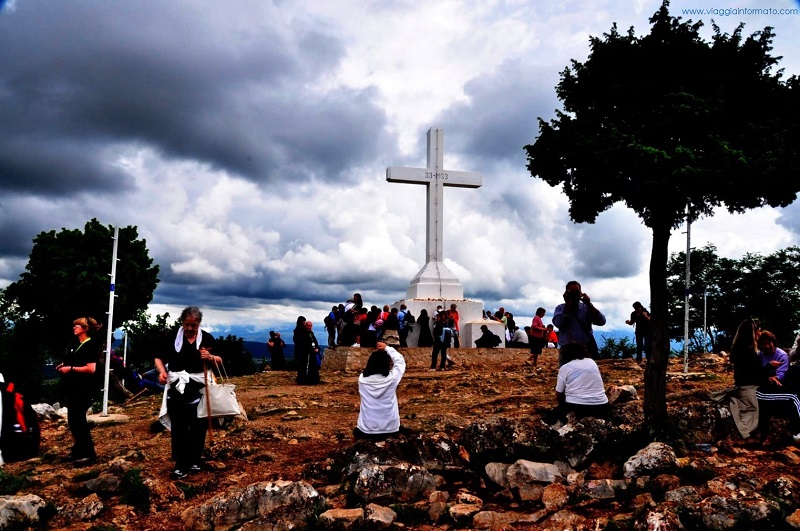
On the occasion of the first anniversary of the death of Father Slavko, historian and beloved parish priest of Medjugorje, who passed away on 24/11/2000, the boys of the Cenacle Community, founded by Sister Elvira in 1983 in Saluzzo (CN) in Italy to offer help to drug addicts, placed on the top of Krisevac a huge boulder that bears a bronze relief depicting the parish priest, who died right on the top of the hill where he had just completed the rite of the Via Crucis, as every Friday, surrounded by pilgrims and parishioners.
The Podbrdo
The Podbrodo is nothing more than a barren hill scattered with red stones, once impractical except by flocks and wild animals. Located on the slopes of Mount Crnica, not far from the village of Bijacovici, the hometown of the six visionaries, it is located one and a half kilometres from the parish church of Saint James. What makes it so special is the fact that it is the place where the first apparitions of Our Lady of Medjugorje took place. For this reason today it is known as Apparition Hill and has become for all the faithful on pilgrimage to Medjugorje the place par excellence of meditation and personal dialogue with Our Lady.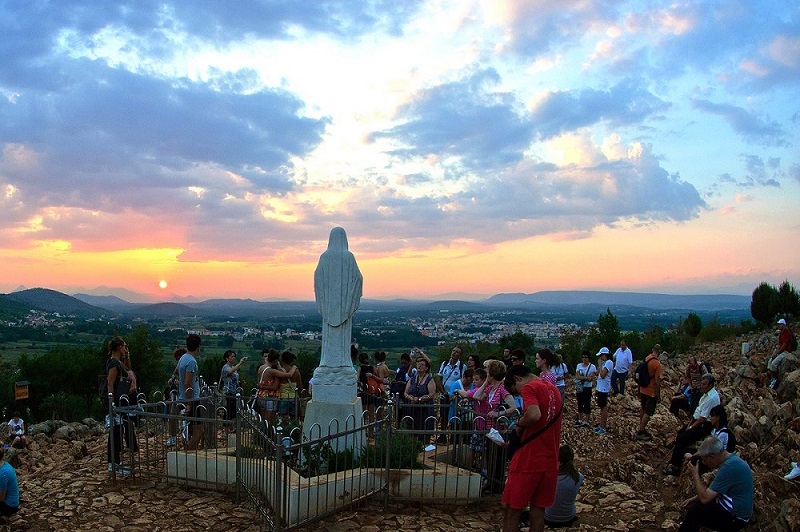
The once impervious path has been transformed by the passage of the countless pilgrims who every day go to this place steeped in spirituality and suggestions, smoothing the roughness and making the climb much easier.
Along the path that climbs to the top of the Podbrdo, as we will see in the paragraph dedicated to the Paths of Medjugorje, are placed bronze reliefs representing the Mysteries of the Rosary.
At some point, we also come across a large wooden cross, where pilgrims stop to rest and meditate.
Going further there is the magnificent marble statue of the Virgin, the work of the Italian sculptor Dino Felici, gift of a Korean family for grace received. At the foot of the statue the words “I am the Queen of Peace 25/06/1981” recall the message in which Our Lady of Medjugorje presented herself as Queen of Peace. “I have come to tell the world that God exists and that in God there is life. Those who find God will find peace and life.”
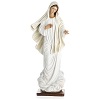
This statue is another place of rest and meditation, where pilgrims stop to pray, each gathered in their inner dialogue with the Virgin, each looking for help, comfort, or just a little relief from the burden of life.
The Church of St. James in Medjugorje
St. James the Elder, the protector of pilgrims, is the patron saint of Medjugorje. The parish church is dedicated to him that today gathers not only the faithful of the area but all the pilgrims who come to Medjugorje to seek contact with Our Lady. The old church, built on a landslide in 1897, was replaced in 1969 by this one, very large compared to the number of parishioners at that time. As if the builders had a prophetic vision of what would happen in Medjugorje in a few years. What remains of the old Church stands in the park to the left of the Sanctuary.
In the square of the Church of San Giacomo, there is another statue of the Madonna always carved by Dino Felici, like the one on the Podbrdo.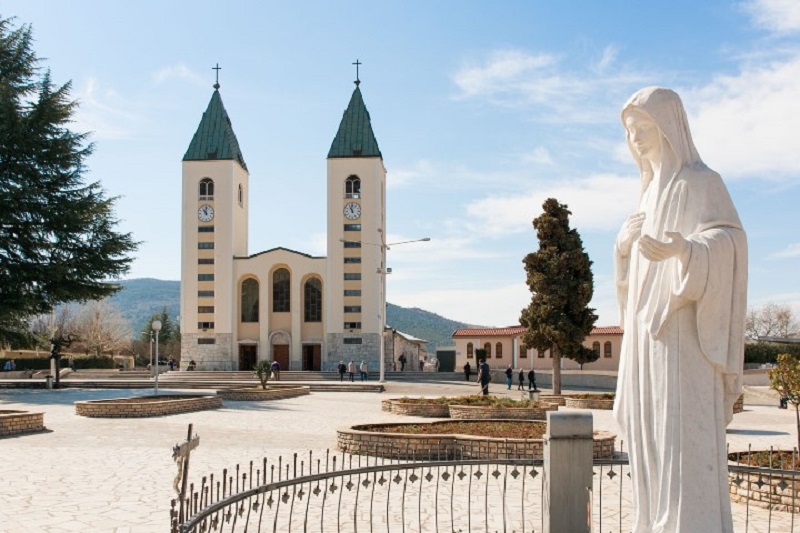
The Adoration Chapel, built in 1991 to the left of the church, welcomes all pilgrims who wish to gather in prayer and adoration of the Blessed Sacrament. The 25th of each month is also open all night for Silent Night Adoration. Every morning Holy Masses are celebrated here for the different language groups.
The Church of St. James has also been called the “confessional of the world” with its twenty-five confessionals where priests from every nation hear confessions in all languages of the world.
The church also has an external altar, equipped with 5,000 seats and used in summer for evening liturgical celebrations and large gatherings. At the back of the church a large hall was dedicated to John Paul II, which can hold up to 800 people, houses prayer meetings, the testimonies of seers and other solemn celebrations.
The Church of St. James is the centre of all spiritual activities in Medjugorje, from masses in all languages to blessings, to prayer meetings that take place every day according to a specific schedule.
The Paths of Medjugorje
The path that leads to Podbrdo
We have already mentioned the bronze reliefs along the path that leads to the top of Apparition Hill. Created in 1989 by the Italian sculptor Carmelo Puzzolo, they represent the joyful, painful and glorious mysteries of the Rosary. The friars of the shrine every Sunday at 2 p.m. lead the pilgrims in a community Rosary to the top of Apparition Hill.
The path that leads to Mount Krizevac
Even the path that goes up to the Cross of Mount Krisevac is marked by 14 wooden crosses next to which in 1987 bronze reliefs were placed, always the work of Carmelo Puzzolo, which represent the stations of the Via Crucis. On each relief is also engraved the face of the Virgin.
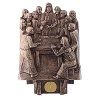
Every Friday afternoon the friars of the sanctuary lead the faithful along the Way of the Cross on the Mount of the Cross.

